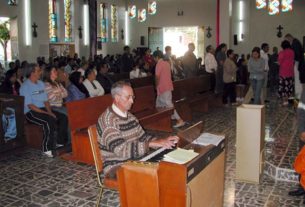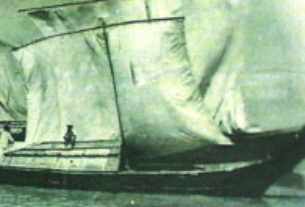A Balloon in Cactus
It’s unusual for me to write about anything other than Mexico as seen through the eyes of a humorist. But this month’s article is different, because someone familiar with the culture around which Gibson’s film revolves, has passionately commented on its alleged authenticity, and her opinion should be available to expatriates living in Mexico.
The curiosity of Gabriela Erandi Rico, a Mexican Indian scholar, poet, and activist living in Berkeley, California, was piqued by Gibson’s project about an ancient Mesoamerican civilization.
Ms. Rico admits that the film is visually stunning with its reconstruction of Mayan architecture, and allows that characters were portrayed mostly by Indian actors speaking in the Maya Yucatec language. But the plot filled her with disgust, rage and indignation. Like I said, she’s passionate with her criticism.
What she found so offensive was the film’s violence. She strongly objected to the showing of a head bumping down the steps of the central Mayan pyramid. Also objectionable to Ms. Rico were several scenes of sharp blades plunging into living human flesh to extract still-beating hearts.
“This nonstop carnage portrays the Mayas as bloodthirsty savages, a stereotype that is painfully familiar to Indians,” said Ms. Rico.
According to Ms. Rico, although sacrifice was an important symbolic part of Aztec and Maya spirituality, many of the accounts given by Spanish soldiers and priests were grossly exaggerated. To substantiate her comments, she claims that archaeologists have been unable to find the mass numbers of sacrifices that Spanish accounts claimed. She does not say how many, if any, were uncovered.
Ms. Rico states “Scholars who study the art of warfare of Mesoamerican societies, such as the Mayas and the Aztecs, acknowledge that these civilizations followed strict rules of war. Although warrior societies did set out to find captives, they did not raid villages or burn houses or rape women or dispose of children. Such cowardly acts would have brought them shame and dishonor.
“The Mayas were one of the greatest civilizations in the Americas, as Gibson’s film rightly acknowledges. They were advanced in astronomy, architecture, the arts and mathematics. They gave the world the concept of zero, came up with the most advanced writing system in the Western Hemisphere and designed a calendar far more accurate than the Gregorian one we live by today.
“Instead of paying tribute to these contributions from Mayan society, Gibson chose to highlight only sacrifice. But if carnage was what Gibson was after, why not focus on the mass genocide of Mayas during the Spanish Conquest? Or the contemporary genocide Mayas suffered during the Central American civil wars of the 1980s, which the U.S. government helped fuel?
“At a time when the portrayals of American Indians in the mainstream media are scarce, Gibson chose to depict the Mayas as exotic, violent and ultimately disposable. He has done Indians no favor,” exhorts Ms. Rico.
Normally, I don’t listen to movie critics and see whatever I think sounds entertaining. However, Ms. Rico’s comments, many of which have been published in newspapers from the Hartford Courant to the Sacramento Bee, actually did influence me against seeing Apocalypto. It didn’t take long for me to realize that if I want that much violence, all I have to do is tune in to the evening news.


